As a kayaking enthusiast, I find the perfect way to unwind is by paddling through serene waters and taking in the beauty and tranquility of nature. In order to maximize my enjoyment and minimize potential risks, I have made it a priority to familiarize myself with kayak safety guidelines. One question that often arises among fellow paddlers is, “Is it illegal to kayak without a life jacket?” Understanding the legalities surrounding life jackets and kayaking is crucial for both beginners and experienced kayakers alike. In this article, we will explore the importance of wearing a life jacket, the various laws, and regulations associated with life jacket usage, as well as additional safety gear that all paddlers should consider having on hand.
Being well-informed and adhering to safety regulations not only ensures that you have the best kayaking experience, but it could also end up being a lifesaving decision. So, before you hit the waters on your next kayaking adventure, let’s dive into the topic of life jackets and their legal requirements.
Contents
Contents
Can You Go Kayaking Without A Life Jacket?
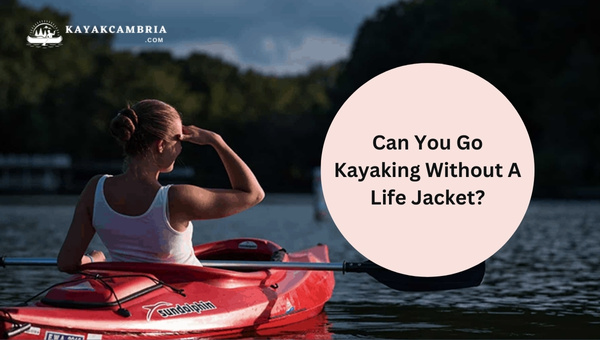
As much as the thought of paddling freely might be tempting, I must emphasize that going kayaking without a life jacket is not recommended. Aside from the obvious safety reasons, there are legal implications to consider. Life jackets are a crucial piece of equipment designed to help you stay afloat and provide assistance in emergencies. By forgoing a life jacket, you’re not only putting yourself at risk, but you may also be in violation of federal, state, or local laws.
Throughout my experiences on the water, I’ve found that it’s always best to err on the side of caution, regardless of my own swimming ability. Even the most skilled swimmers can find themselves in dangerous situations, and having a life jacket can mean the difference between life and death.
In addition to personal safety, life jackets can provide an essential signaling tool for rescuers. A brightly colored life jacket can help you stand out against the water, making it easier for rescuers to locate you in case of an emergency.
As kayakers, we owe it to ourselves, our fellow paddlers, and the larger kayaking community to prioritize safety and abide by the laws put in place to protect us. So, while it might be tempting to venture out without a life jacket, the risks far outweigh the perceived benefits.
Is It Illegal?
The answer to whether it’s illegal to kayak without a life jacket really depends on where you are kayaking and the specific regulations of that area. In the United States, the Coast Guard classifies kayaks as recreational vessels, and federal law requires that there be a life jacket on board for every person in a kayak. However, this doesn’t mean that you are legally obligated to wear the life jacket at all times – that depends on the jurisdiction and the laws in place.
In some locations, it is mandatory to wear a life jacket while kayaking, while in others, it is simply required to have a life jacket on board. For example, in California, adults must have a life jacket on board but are not required to wear them, while children under the age of 13 must wear them at all times. In Maryland, boaters (including those in kayaks) must wear a life jacket from November 1st to April 30th due to the increased risk of hypothermia during colder months.
In Canada, the law is quite similar. Kayakers are required to have a life jacket or personal flotation device (PFD) with them in the vessel, but the specifics about wearing the life jacket again depend on the province or territory in which you are paddling.
Since laws around life jacket usage can vary greatly depending on where you are, it’s essential to familiarize yourself with the local regulations and adhere to them to avoid penalties and fines. While not wearing a life jacket may not always be illegal, you should always consider the significant safety benefits that come with wearing one.
Understanding the laws and regulations surrounding life jacket use can help ensure a safe and enjoyable kayaking experience. Remember that safety always comes first, and wearing a life jacket might just save your life in an emergency.
Importance Of Wearing A Life Jacket While Kayaking
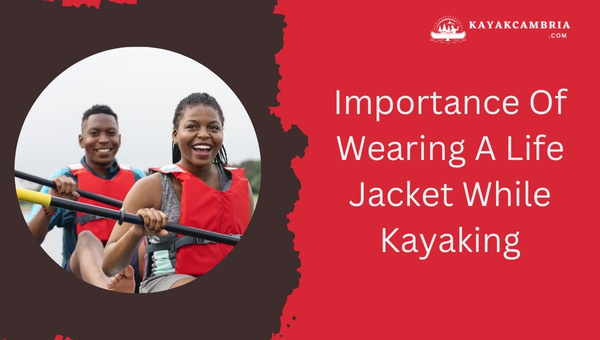
As an avid kayaker, prioritizing safety is crucial for not only my well-being but also the well-being of those around me. One of the most important pieces of equipment to have on hand when hitting the water is a life jacket. Here’s why wearing a life jacket is essential while kayaking:
Personal Safety
First and foremost, wearing a life jacket can save your life. In the unfortunate event of an accident, life jackets provide the necessary buoyancy to help keep your head above water. This is crucial, especially if the water is cold, choppy, or there are strong currents.
Buoyancy Assistance
Kayaking can sometimes lead to unexpected situations, such as capsizing. If this occurs, a life jacket can offer much-needed support and buoyancy while you recover and get back into your kayak.
Rescue Signaling
Life jackets often come in bright, easily visible colors and may also have reflective materials, making them ideal for aiding in rescue situations. In case of an emergency, being spotted quickly by a rescue team can make all the difference.
Understanding the importance of wearing a life jacket while kayaking serves as a reminder to always prioritize safety on the water. By doing so, you maximize your enjoyment of the sport while minimizing risk.
Laws Regarding Life Jacket Usage In Kayaking
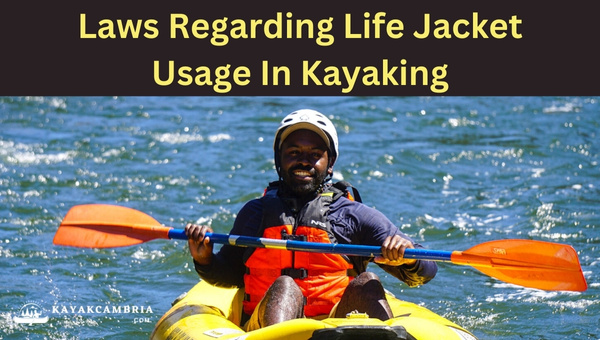
Life jacket regulations for kayaking vary from state to state, and it is important to familiarize yourself with the specific rules in your area. In general, there are three primary factors that affect life jacket laws during kayaking: federal regulations, state-specific laws, and potential penalties or fines.
Federal Regulations
At the federal level, the United States Coast Guard (USCG) classifies kayaks as recreational vessels and mandates that all kayaks carry a USCG-approved life jacket for each person aboard. Furthermore, children under a certain age (usually 13) are required to wear a life jacket at all times while on the water. It is essential to consult USCG guidelines and ensure that you adhere to these standards.
State-Specific Laws
In addition to federal regulations, each state has its own life jacket laws for kayakers. Some states, such as California and New York, require that all occupants of a kayak wear their life jacket at all times regardless of their age or swimming ability, while others, like Texas and Florida, have more lenient guidelines.
To avoid legal repercussions, make sure to review the life jacket requirements specific to your state before taking to the water. Many state Department of Natural Resources or Parks and Recreation websites provide relevant information on this subject.
Potential Penalties And Fines
Failing to comply with life jacket laws can result in various penalties, depending on the jurisdiction. Common consequences include verbal warnings, fines ranging from $25 to over $500, or even a misdemeanor charge in some cases. These fines can be levied not only for failing to wear a life jacket but also for carrying a non-USCG-approved life jacket aboard your kayak.
It is of utmost importance to adhere to life jacket regulations for kayaking, both for your personal safety and to avoid potential legal ramifications. Be sure to research your state’s specific life jacket laws, and always have a USCG-approved life jacket with you on your kayaking adventures.
Appropriate Life Jackets For Kayaking
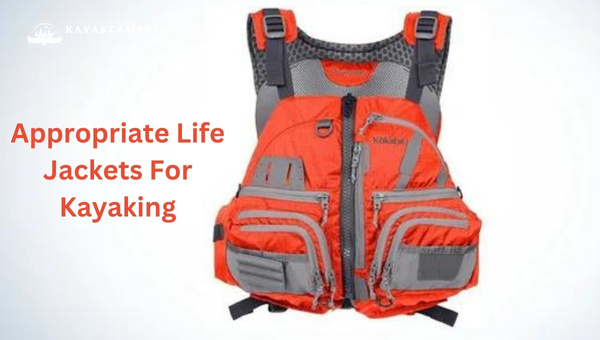
When it comes to kayaking, choosing the appropriate life jacket is crucial for ensuring safety and comfort while on the water. Life jackets, also known as personal flotation devices (PFDs), come in various types, sizes, and designs to cater to paddlers’ needs and preferences.
Types Of Life Jackets
There are several types of life jackets, each with its own set of features and benefits. The most common types suitable for kayaking include:
- Type III: These are inherently buoyant life jackets designed for calm waters and provide good freedom of movement. They keep the wearer afloat in an upright position but may require some effort from the wearer to establish a face-up position in the water.
- Type V: These are specialized life jackets, including inflatable PFDs that can inflate automatically or manually, providing better buoyancy than Type III jackets. Some Type V PFDs are specifically designed for kayaking, with features like large armholes for increased range of motion.
It is essential to choose a life jacket approved by the U.S. Coast Guard to ensure its quality and effectiveness.
Proper Fit And Sizing
A well-fitting life jacket is vital for its effectiveness and overall comfort. To find the perfect fit, follow these guidelines:
- Chest Size: Choose a life jacket based on your chest size, not your weight. Make sure it fits snugly without being too tight or too loose.
- Adult and Child Sizes: Life jackets are available in adult, youth, and child sizes. It is crucial to select the right size depending on the wearer’s age, ensuring the life jacket’s buoyancy can sufficiently support the wearer’s body weight.
- Try it On: Wear the life jacket and tighten all the straps, starting with the waist strap. You should be able to fit two fingers between your body and the life jacket comfortably. Lift the shoulders of the life jacket; it should stay in place and not ride up over your face.
Choosing The Right Life Jacket For Your Needs
When selecting the most suitable life jacket, consider the following factors:
- Activities: Choose a life jacket designed for paddlesports like kayaking, canoeing, or stand-up paddleboarding.
- Features: Look for features like large armholes or multiple adjustment points for improved mobility and a better fit.
- Color: Opt for bright and highly visible colors like orange or yellow to ensure you are easily spotted in case of an emergency.
- Pockets and Attachments: Pockets may be useful for storing small essentials, while attachments like D-rings can help secure a whistle or knife.
Ultimately, finding the right life jacket for your kayaking adventures will enhance your safety and overall paddling experience. Remember to prioritize finding a well-fitting, U.S. Coast Guard-approved PFD to truly benefit from all the essential safety features life jackets have to offer.
Additional Safety Gear To Bring Kayaking
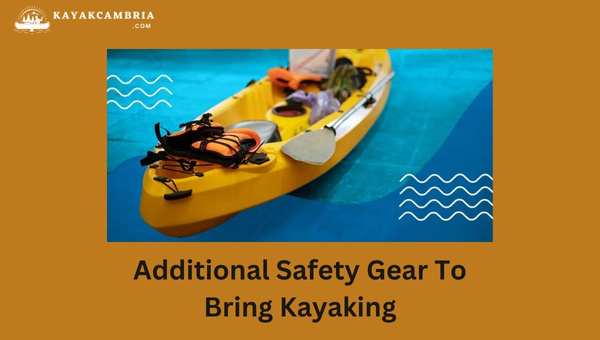
While wearing a life jacket is essential for a safe kayaking experience, there are other items to consider packing to maximize your safety on the water. Here’s a list of useful safety gear that you can bring along:
1. Paddle Leash
A paddle leash can be a game-changer when you’re kayaking, as it keeps your paddle securely attached to your kayak. This simple device can save you the trouble of losing your paddle or struggling to retrieve it in case of a capsize or becoming separated from your kayak.
2. Whistle Or Loud Noisemaker
At times, particularly during an emergency, you need to be able to signal for help or alert others. A whistle or other loud noisemaker is an essential safety tool to carry with you while kayaking. It is lightweight and can be easily attached to your life jacket for quick access.
3. Dry Bag Stocked With Essentials
A dry bag is a must-have piece of equipment for any kayaker, as it keeps your belongings safe and dry. In addition to keeping your personal items, like your phone and wallet, dry, it can also hold essential safety items such as a first aid kit, spare clothes, high-energy snacks, water, waterproof flashlight, rescue rope, and weather protection gear like a poncho.
4. Safety Knife
In situations where you might entangle in ropes or fishing lines, a safety knife can be crucial. Invest in a quality one that is corrosion-resistant and attach it to your life jacket within easy reach. Remember to keep it in a securely closed sheath to avoid accidental injury.
5. Bilge Pump
For sit-inside kayaks, a bilge pump can be incredibly useful for removing excess water that has accumulated inside the cockpit due to splashes, leaks, or rain. This helps maintain your kayak’s buoyancy and stability during your trip.
6. Communication Device
It’s crucial to stay connected while you’re out on the water, especially when emergencies arise. A waterproof case for your cell phone or a portable marine VHF radio will enable you to contact rescuers or communicate with fellow kayakers.
By investing in additional safety gear and taking the time to create a culture of safety while kayaking, you can both enjoy your time on the water and respect the laws and regulations surrounding life jackets and their usage. With proper planning and precaution, your kayaking adventures can be safe and memorable experiences.
Embracing A Culture Of Safety On The Water
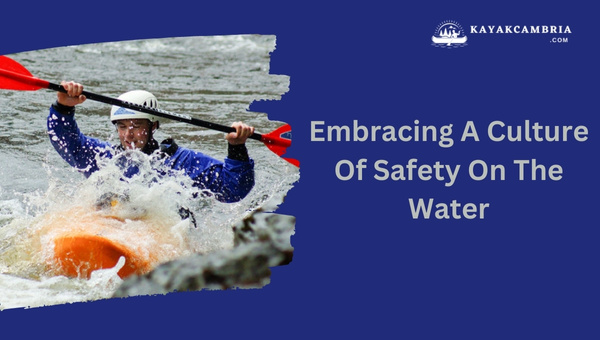
As kayakers, our love for the water and the thrill of exploration comes with a responsibility to prioritize safety. By adhering to guidelines and understanding the importance of various safety gear, we contribute to a safer environment for ourselves and fellow paddlers. In this section, we will discuss some ways to embrace a culture of safety on the water.
Sharing Knowledge With Fellow Paddlers
When out on group paddling trips or meeting new kayakers, exchanging knowledge of safety procedures and equipment can be invaluable. By sharing our experiences and discussing the importance of life jackets, we are not only encouraging others to stay safe, but we are also learning from their insights and experiences.
Staying Aware Of Local Regulations
Each state and local area often has its own specific rules and regulations when it comes to kayaking. As responsible paddlers, it’s essential to constantly stay informed and adhere to these regulations, including those that dictate when and where life jackets are required. This not only keeps us legally compliant but also helps ensure a safe environment for everyone on the water.
Participating In Local Safety Courses And Certifications
One of the best ways to become comfortable with kayaking safety and equipment is to participate in safety courses available in your area. These classes can teach essential kayaking skills and safety procedures while providing opportunities for hands-on practice. By obtaining certifications and attending refresher courses, we are always up-to-date on the latest safety guidelines and best practices, leading to increased confidence on the water.
Embracing a culture of safety while kayaking involves constant learning, sharing of knowledge, and staying aware of local regulations. Wearing a life jacket is just one critical element of ensuring our safety and that of our fellow paddlers on the water. By prioritizing safety, we ensure enjoyable adventures paired with peace of mind.
Kayaking Hazards And The Role Of Life Jackets
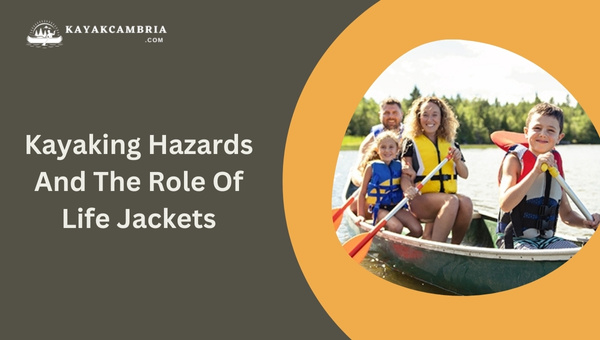
Kayaking can be an exhilarating and relaxing activity, but like any water sport, it comes with some potential hazards. It’s important to be aware of these risks, to help ensure a safe trip on the water. Life jackets play a crucial role in mitigating these hazards, making them an essential part of a kayaker’s safety gear. Let’s explore some specific kayaking hazards and the role life jackets play in addressing them.
Hypothermia Prevention
While kayaking, there’s always the potential to end up in the water, either through capsizing or simply falling out of the kayak. In colder water conditions, hypothermia can set in quickly, impairing your ability to make sound decisions and perform essential survival skills. Wearing a life jacket helps to keep your head above water, minimizing heat loss and allowing you to focus on returning to your kayak or waiting for rescue without the added stress of struggling to keep afloat.
Capsizing And Recovery
Capsizing can happen to even the most experienced kayakers. A life jacket can be of great assistance in this situation, by providing buoyancy, making it easier to right the kayak and re-enter or to stabilize yourself while awaiting assistance. Furthermore, should you become separated from your kayak, the life jacket will help you stay afloat until you’re able to locate it or to be rescued.
Accidents Attributed To Sudden Weather Changes
When enjoying a day out on the water, weather can change rapidly, leading to potentially dangerous situations. Strong winds or sudden storms may make the water much more challenging to navigate. In such scenarios, wearing a life jacket is crucial as it ensures that, if caught off-guard by a gust of wind or an unexpected wave, you’ll have the buoyancy necessary to stay afloat and maintain control of your kayak.
Life jackets play a vital role in mitigating some of the key hazards encountered while kayaking. No matter your skill level, wearing a life jacket is both a responsible and practical choice, helping to ensure your safety and the safety of others on the water.
Age And Skill Level: Life Jacket Requirements
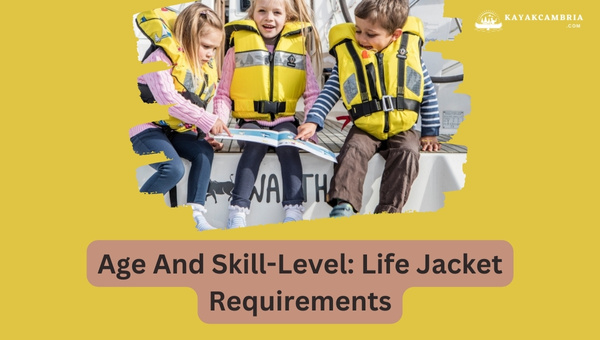
When it comes to life jacket requirements, age and skill level often come into play. There are specific laws or guidelines for children, beginners, and differently-abled paddlers as related to life jacket usage. It’s essential to stay informed about these requirements to ensure a safe and enjoyable kayaking experience.
Child-Specific Life Jacket Laws
In many states, there are mandatory life jacket usage requirements for children. Generally, children aged 12 and under are required to wear a life jacket at all times while on a kayak. It’s important to check with your state’s laws to determine the exact age limits and requirements for life jacket usage.
How Experience Level Affects Life Jacket Usage
For all kayakers, regardless of experience, wearing a life jacket is a smart safety decision. However, some people with more paddling experience may be less likely to wear a life jacket. This decision can lead to potentially dangerous situations, as even the most skilled kayakers can experience unforeseen water hazards. It’s crucial to recognize that experience does not negate the need for proper safety precautions, and a life jacket should always be worn while kayaking.
Guidelines For Differently-Abled Paddlers
Differently-abled paddlers may also have specific life jacket requirements, depending on their unique needs. Some adaptive kayaking programs and events require that all participants, regardless of ability, use life jackets. For those paddling on their own, it’s essential to find a life jacket that fits comfortably and securely, taking into consideration any special seating or mobility needs.
Age and skill level should be factored into the life jacket requirements for safe and responsible kayaking. Children, beginners, and differently-abled kayakers can all benefit from wearing a life jacket while out on the water. Stay informed about the rules and guidelines in your area and always prioritize safety when gearing up for a paddling adventure.
Documented Benefits Of Wearing A Life Jacket
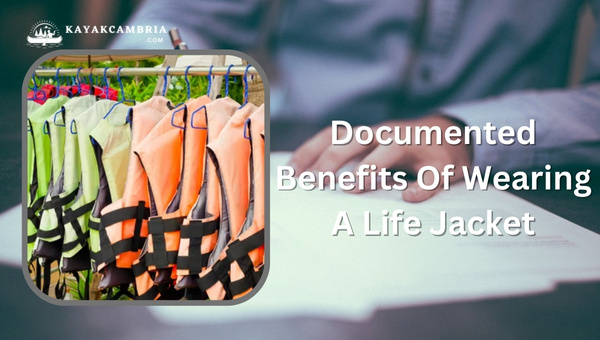
Wearing a life jacket is not just about adhering to laws and regulations; it’s about prioritizing your safety and well-being while enjoying the sport of kayaking. Over the years, multiple studies and personal accounts have showcased numerous documented benefits of wearing a life jacket during our adventures on the water.
Improved Survival Rates
First and foremost, wearing a life jacket significantly increases the wearer’s chance of survival in the event of an accident or capsizing. According to the United States Coast Guard, a staggering 84.5% of drowning victims in recreational boating accidents were not wearing life jackets. With these statistics in mind, it’s evident that wearing a life jacket can be a lifesaving decision.
Rescue Aid
Life jackets not only keep you afloat but also make it easier for rescue personnel to locate and assist you. Many life jackets come with reflective materials and bright colors that increase visibility in the water. Furthermore, some models include built-in safety whistles, which can be used to alert nearby boaters or rescuers in case of distress.
Hypothermia Prevention
When paddling in cold water, wearing a life jacket can help retain body heat and mitigate the risk of hypothermia. A life jacket aids in keeping your core warm, making it easier to maintain body heat while waiting for rescue or assistance.
Encouraging Newcomers
Wearing a life jacket also makes the sport of kayaking more accessible to beginners and those who may be hesitant to participate. Knowing that they have a crucial safety device in place can help encourage newcomers to take up kayaking and enjoy a day out on the water.
Reducing Fatigue And Anxiety
Life jackets can also help reduce fatigue and anxiety, especially during long kayaking trips. The support provided by a life jacket can be a welcome relief for tired muscles and can help individuals feel more secure in the kayak, preventing panic in challenging situations.
The documented benefits of wearing a life jacket while kayaking are indisputable. From increased survival rates to making the sport more accessible, lifejackets play a crucial role in promoting safety and enjoyment in the kayaking community. So next time you hit the water, remember to prioritize your safety by proudly wearing your life jacket.
Debunking Common Life Jacket Myths
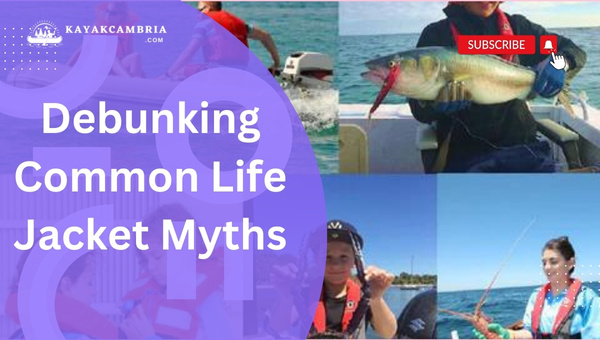
Despite the importance of life jackets, some kayakers have misconceptions about them. Let’s debunk some common myths about life jackets and their usage in kayaking.
Myth 1: Strong Swimmers Don’t Need Life Jackets
Fact: Even the most skilled swimmers can become overwhelmed by waves, sudden changes in water temperature, or unexpected injuries. Wearing a life jacket can improve buoyancy, increase chances of staying afloat during emergency situations, and ultimately save your life.
Myth 2: Life Jackets Are Uncomfortable And Restrictive
Fact: Modern life jackets come in various styles, shapes, and sizes, ensuring comfort and freedom of movement. Choose a life jacket designed specifically for paddling, as they have bigger armholes and cut-away foam that allow for better range of motion during kayaking.
Myth 3: Life Jackets Are Bulky And Unfashionable
Fact: Life jackets have evolved over the years and now come in sleek, slim, and stylish designs. You can find life vests in a variety of colors and patterns that reflect your personal style while keeping you safe on the water.
Myth 4: Wearing A Life Jacket Hinders Kayaking Performance
Fact: Wearing a life jacket doesn’t affect your kayaking abilities or paddling performance. In fact, it can offer additional support and comfort during long paddling sessions. However, proper fitting is crucial to ensure that the life jacket does not cause discomfort or restrict your movements.
Myth 5: Inflatable Life Jackets Are Not As Safe As Traditional Life Vests
Fact: Inflatable life jackets have gained popularity in the kayaking community because they are lightweight and less bulky than traditional life vests. When maintained and used correctly, inflatable life jackets can provide the same level of safety as traditional life vests. However, users must remember to periodically check the inflation mechanism and CO2 cartridges to ensure proper functioning.
Debunking these common myths helps reinforce the importance of wearing a life jacket while kayaking. In any case, it is crucial to prioritize safety over personal preferences.
Life Jacket Maintenance And Care
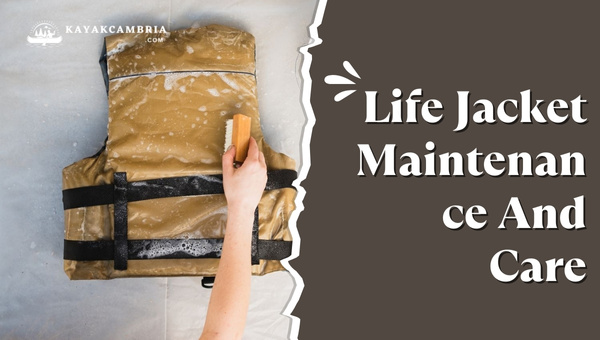
Proper life jacket maintenance and care are crucial for ensuring your safety gear remains effective throughout your kayaking adventures. By following these guidelines, you’ll keep your life jacket in good condition, which can potentially save your life.
Proper Storage
It’s essential to store your life jacket in a cool and dry place away from direct sunlight, as exposure to the sun can cause the material to degrade over time. Be sure to hang your life jacket up, allowing for proper airflow, which can prevent any mildew or mold growth.
Cleaning And Inspection
After each use, make sure to rinse your life jacket with fresh water to remove any salt, dirt, or debris. To clean your life jacket, use mild soap and water to gently scrub the surface before thoroughly rinsing it off. Allow your life jacket to air dry, avoiding any direct sunlight.
Regular inspections for any signs of damage, including frayed straps, broken buckles, or punctures in the buoyant material, are essential. Checking the stitching and overall integrity ensures that your life jacket is in good working condition.
Replacement Guidelines
Industry experts recommend replacing your life jacket every three to five years, or sooner if signs of wear and tear are evident. It’s crucial to consider the life jacket’s buoyancy too – if it’s no longer providing sufficient floatation, it’s time for a replacement.
Proper life jacket maintenance and care are vital components of kayaking safety. By adhering to these guidelines, you’ll ensure your life jacket remains effective in protecting you during your water-based adventures. Remember, a well-maintained life jacket can make all the difference when it comes to paddle safety and enjoyment.
Responsible Kayaking: Advocating For Life Jacket Use

As kayakers, it’s essential that we not only adhere to proper safety practices ourselves but also advocate for a culture that prioritizes safety and life jacket usage. By promoting life jacket use among fellow paddlers, we can continue to enjoy our favorite water activities while contributing to a safer kayaking community. Here are some ways we can actively advocate for life jacket use:
Spreading Awareness Through Social Media
We live in an increasingly connected era, which means it’s easier than ever to share information about the importance of life jackets while kayaking. By sharing your own safe kayaking experiences, directing followers to reputable resources, or engaging in online discussions about life jacket use, you can help raise awareness and encourage others to prioritize safety on the water.
Joining Paddling Clubs And Organizations
Being part of a group of like-minded kayakers not only opens up opportunities for fun and fellowship but also provides an environment to share knowledge about proper safety practices. Participating in local paddling clubs and organizations allows you to connect with fellow kayakers who can learn from your advocacy for life jacket use and promote those same safety values in their own circles.
Encouraging Friends And Family To Prioritize Safety
Our closest connections are often the people we have the most significant influence on, so don’t underestimate the importance of encouraging your friends and family to wear life jackets while kayaking. By sharing your knowledge about life jackets’ benefits, debunking common myths, and simply modeling responsible life jacket usage, you can help create a safer kayaking community one paddler at a time.
Remember, as a dedicated kayaker, responsible safety practices are just as important as mastering paddling techniques or choosing the perfect kayak. By advocating for life jacket use in every kayaking setting, we not only work towards a safer community but also help ensure that our favorite water activity remains an enjoyable and accessible outdoor adventure for generations to come.
Life Jacket Alternatives And Their Legality
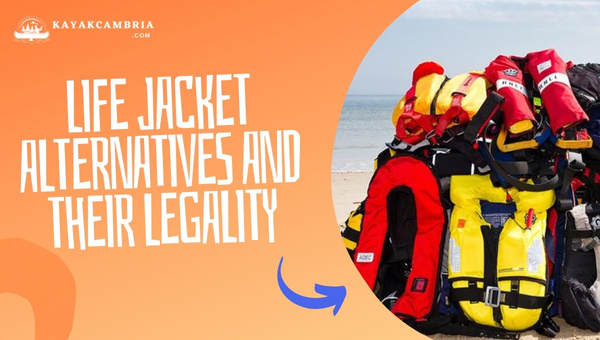
While life jackets are the traditional form of flotation gear in kayaking, they are not the only option available. Some paddlers search for alternatives that provide a slightly different balance between comfort and safety. However, it is crucial to understand the legality of these alternatives before heading out on the water.
Inflatable Belts And Vests
Inflatable belts and vests are compact and lightweight options that offer buoyancy when inflated. They can be manually or automatically inflated, depending on the type. While these alternatives are less bulky than traditional life jackets, it is essential to note that the U.S Coast Guard considers these devices as Type V Personal Flotation Devices (PFDs) and may not be legally accepted in all states for kayaking. Be sure to check your local regulations before making the switch.
Floatation Clothing
Floatation clothing such as wetsuits, drysuits, and pants with built-in flotation foams can provide additional buoyancy during kayaking. Though they might not offer the same level of safety as traditional life jackets, they can still help in an emergency. Again, remember to verify whether floatation clothing is considered legal in your state or region.
Comparing Alternative Options With Life Jackets
While life jacket alternatives may seem appealing due to their lightweight and less bulky design, it is crucial to weigh their benefits against traditional life jackets. Standard life jackets provide consistent buoyancy without needing to inflate, are more universally accepted, and are generally designed to keep your head above water if unconscious. These factors make life jackets the more reliable choice when considering flotation devices for kayaking.
When exploring life jacket alternatives, it is vital to research their legality in your area and compare their safety features to those of a traditional life jacket. While some may prioritize comfort, never compromise on safety, as these devices can make all the difference in an emergency situation. Always adhere to local laws and regulations regarding PFDs while kayaking to guarantee both your safety and the well-being of others.
Knowing When To Replace Your Life Jacket
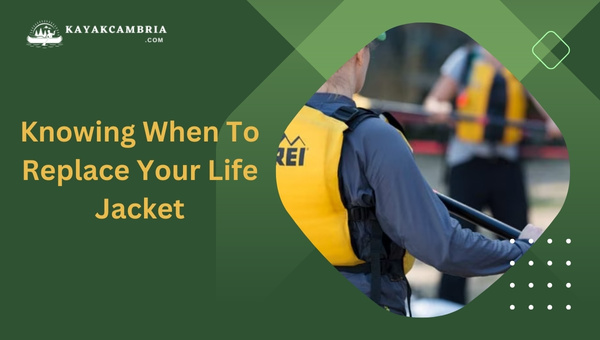
Life jackets play a crucial role in ensuring our safety while kayaking, but like any piece of equipment, they have a shelf life and eventually need to be replaced. So, how do we know when it’s time to invest in a new life jacket? Here are some key points to consider:
Signs Of Wear And Tear
Regularly inspect your life jacket for visible signs of wear, such as fraying, fading, or tearing of the fabric. These small issues may not seem like a big deal, but they can actually compromise the structural integrity of the jacket and reduce its effectiveness in a life-saving situation.
Ensuring Buoyancy Is Intact
To make sure your life jacket still provides adequate buoyancy, perform a simple at-home test. First, fully immerse the life jacket in water and squeeze out any air bubbles. Then, release it and observe its buoyancy – it should float to the surface and remain there. If it sinks or struggles to stay afloat, it’s time to replace it.
Advice From Experts On Life Jackets
Experts recommend replacing your life jacket at least every five years, or more frequently if it sees heavy use. Keep in mind that foam can deteriorate over time, even when stored properly, so it’s essential to stay vigilant and replace your life jacket when necessary.
In addition to these guidelines, always follow the manufacturer’s recommendations for maintaining and replacing your life jacket. They may provide further information specific to the model and materials used in your jacket. Moreover, it’s important to educate yourself on proper life jacket care and storage to prolong its life and ensure maximum safety during your kayaking adventures.
By keeping these tips in mind, you can enjoy your time on the water with the peace of mind that you’re adequately protected in case of an emergency. So, inspect your life jacket regularly, look out for signs of wear and tear, and don’t hesitate to invest in a new one when necessary. After all, your safety is the top priority!
Kayaking Organizations And Competitions: Life Jacket Rules
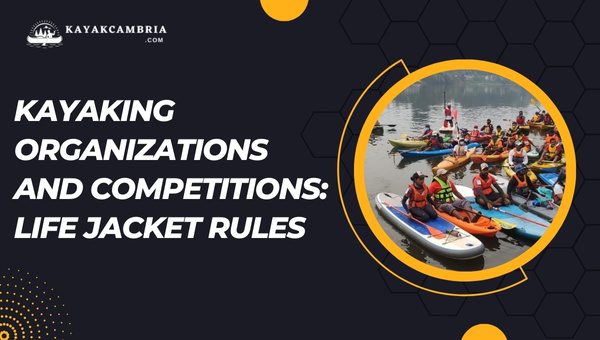
As kayaking continues to grow in popularity, so do organized events and competitions such as races and adventure challenges. These events often have stringent safety guidelines for participants to follow, many of which include specific rules regarding the use of life jackets.
On The Importance Of Life Jacket Rules In Kayaking Events
Safety is always a top priority when participating in any water-based activity, and even more so when we throw competition into the mix. Kayaking events put paddlers under various conditions such as exhaustion, adrenaline, and pressure, which underscores the importance of diligently following life jacket rules. By adhering to safety guidelines, participants can focus on the sport and camaraderie while mitigating unnecessary risks.
Racing And Adventure Competitions
In most kayaking races and adventure competitions, life jackets are mandatory for all participants. Organizers typically require Personal Floatation Devices (PFDs) that meet specific safety standards, such as those approved by the U.S. Coast Guard. These guidelines will often be outlined in event registration details or provided during pre-race meetings.
Group Outings And Organised Trips
Guided kayaking tours and group outings also prioritize safety and usually require all paddlers to wear life jackets. While specific rules and regulations may vary from one organization to another, life jacket use will typically be upheld as a fundamental safety measure. It’s best to inquire about life jacket rules and expectations when planning to join a guided trip, so you can adequately prepare and avoid any surprises.
Importance Of Following Safety Guidelines For Participation
Aside from the legal requirements and organizations’ rules, wearing a life jacket during a kayaking event demonstrates personal responsibility and respect for the sport. By prioritizing safety, participants set a positive example for others and contribute to a culture of responsible kayaking. Following event-specific life jacket rules can also prevent disqualifications, fines, or being barred from future events.
Life jacket rules vary across kayak organizations and competitions. However, the common thread is the importance of following these guidelines to ensure participants’ safety and promote responsible paddling practices. Always equip yourself with the appropriate life jacket, stay informed about event requirements, and enjoy the thrilling adventure that kayaking competitions can offer!
Requirements For Life Jackets In The Different States (2025)
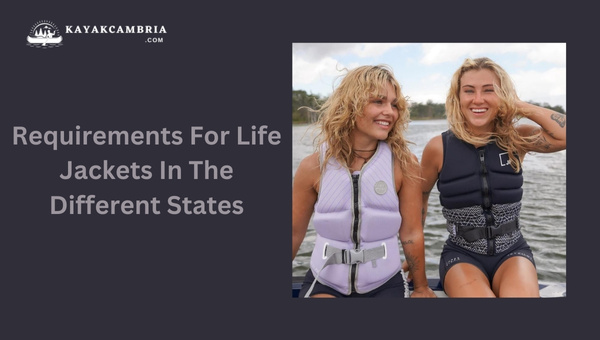
Every state in the United States has its own rules and regulations when it comes to wearing life jackets while kayaking. Here, we’ll take a brief look at some of the life jacket requirements across various states.
California
In California, every child under the age of 13 is required to wear a life jacket while on board any recreational vessel, including kayaks. Life jackets must be U.S. Coast Guard-approved and properly fitted for each individual.
Florida
Florida law mandates that every person under the age of six wear a life jacket while onboard all vessels, such as kayaks, which are less than 26 feet in length. Furthermore, the life jacket must be a Type I, II, or III, and U.S. Coast Guard-approved.
New York
New York State law requires that children under the age of 12 wear a life jacket while aboard any vessel, including kayaks, unless they are within a fully enclosed cabin. Additionally, the life jacket must meet U.S. Coast Guard approval.
Texas
In Texas, all children under 13 years of age must wear a U.S. Coast Guard-approved life jacket while aboard any vessel, including kayaks, which are less than 26 feet in length. This applies when the vessel is underway or anytime the child is not surrounded by railings.
Washington
In Washington State, children under the age of 13 are required to wear a life jacket while onboard any vessel, including kayaks. The life jacket must be U.S. Coast Guard-approved, and it must be an appropriate fit for the child’s size.
New Jersey
In New Jersey, every child under the age of 13 on any recreational vessel under 21 feet in length, including kayaks, must wear a U.S. Coast Guard-approved life jacket. Besides, the life jacket must be an appropriate fit for each person.
Massachusetts
Massachusetts law requires that children under the age of 12 wear a life jacket while on board any recreational vessel, including kayaks. The life jacket must be an appropriate size and be U.S. Coast Guard-approved.
Michigan
In Michigan, all children under the age of six must wear a life jacket while on board any recreational vessel, including kayaks, which are less than 26 feet in length. Moreover, the life jacket must be U.S. Coast Guard-approved and adequately sized.
North Carolina
North Carolina law mandates that children under 13 years old wear a U.S. Coast Guard-approved life jacket while onboard any recreational vessel, like kayaks when underway. The life jackets should also be the right fit for the child’s size.
Virginia
In Virginia, children under the age of 13 must wear a life jacket while onboard any recreational vessel, including kayaks. The life jacket must be an appropriate size, ensuring a secure fit, and U.S. Coast Guard-approved.
It is essential to note that life jacket laws and regulations may change or be updated over time. Be sure to check with the appropriate authorities in your state or the state you plan to kayak in, to ensure compliance with current regulations.
Frequently Asked Questions
1. Do all US states require life jackets for kayakers?
Each state may have its own regulations regarding life jacket usage while kayaking. It’s essential to familiarize yourself with your state’s specific guidelines for life jacket use. Generally, federal law requires that all vessels, including kayaks, have one personal flotation device (PFD) onboard for each person.
2. Are there any exemptions to wearing a life jacket while kayaking?
Some states may grant exemptions for certain situations, like being in shallow water or within a designated swimming area. It’s critical to verify whether any exemptions apply to your specific kayaking location.
3. Can I get fined for not wearing a life jacket while kayaking?
Yes, you can be fined for not wearing a life jacket or not having one onboard while kayaking, depending on your state’s regulations. The amount of the fine may vary.
4. Are life jackets required for kayaking in other countries?
Life jacket requirements vary by country, so it’s essential to research the specific rules and regulations for the country you plan to kayak in. Some countries may have stricter life jacket laws, while others have more relaxed rules.
5. Can I use any type of personal flotation device for kayaking?
While there are various types of PFDs available, it’s essential to choose one designed specifically for kayaking or other paddle sports. These are made to allow for increased range of motion and are generally more comfortable for extended wear.
6. Is it necessary to wear a life jacket even if I’m an experienced swimmer?
Yes, even experienced swimmers should wear a life jacket while kayaking. Unexpected incidents can occur, such as rapid changes in weather conditions, encountering underlying objects, or capsizing in strong currents, which can be life-threatening situations.
7. How do I know if my life jacket is the right size?
A properly fitting life jacket should be snug but still allow you to move comfortably. Most life jackets have size charts and adjustment straps to help achieve the correct fit. To test your life jacket, raise your arms above your head and ask someone to gently pull on its shoulder straps. The life jacket should stay around your chest and not rise above your head.
8. How often should I replace my life jacket?
It’s essential to inspect your life jacket regularly for any signs of wear, such as rips, tears, or deterioration in the buoyancy material. If you notice any issues, it’s time to replace your life jacket. Even if your life jacket appears to be in good condition, it’s recommended to replace it every 5-10 years to ensure optimal performance.
Conclusion
The legality of kayaking without a life jacket depends on federal, state, and local regulations. With the numerous benefits of wearing a life jacket, the importance of prioritizing personal safety, and the possibility of fines for failing to comply with laws, the smart choice is to ensure that you and your fellow paddlers always wear a life jacket while kayaking. Becoming familiar with the specific requirements for your location and participating in an active culture of safety within the kayaking community is essential for everyone’s well-being and overall enjoyment on the water.

